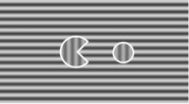(Press-News.org) Barcelona, Spain: Patients with B-cell Non-Hodgkin lymphomas and advanced solid tumours have responded to a new drug that is being tested for the first time in humans in a phase I clinical trial.
Preliminary results from the trial will be presented today (Thursday) at the 26th EORTC-NCI-AACR [1] Symposium on Molecular Targets and Cancer Therapeutics in Barcelona, Spain. They show responses in four lymphoma patients who have failed numerous previous treatments and also in one patient with a cancer for which there is no approved medical treatment at all - a malignant rhabdoid tumour in the brain.
The drug, E7438 (also known as EPZ6438), inhibits the action of a histone methyltransferase (a type of enzyme) known as EZH2. A mutant form of EZH2 is thought to be involved in the development of a number of cancers.
Dr Vincent Ribrag, head of haematology molecular therapeutics in the drug development department (DITEP), at the Gustave Roussy Cancer Campus, France, explains: "In many human cancers misregulated EZH2 enzyme activity results in misregulation of genes that control cell proliferation. Without these control mechanisms, cancer cells are free to grow rapidly. Targeting EZH2 is a novel approach under investigation in oncology. Preclinical work has shown that E7438 successfully targets EZH2 and causes cell death in a number of cancers."
He will tell the Symposium: "In this study responses were seen in patients with lymphoma who were refractory to, or relapsed after, prior standard treatments as well as in a patient with a malignant disease for which there is no available standard medical treatment. This is the first time to our knowledge that a patient with this type of tumour has been treated with an EZH2 inhibitor and responded to treatment."
The trial, which started at two centres in France in July 2013, has recruited 24 patients so far with a range of Non-Hodgkin lymphomas and advanced solid tumours, including one malignant rhabdoid tumour. Aged between 24 and 84, the patients all had a poor prognosis after their cancers had failed to respond or had returned after several previous treatments. For many of them this meant that they had no, or few, treatment options left. They received E7438 orally at one of the five dose levels tested: 100, 200, 400, 800, or 1600 mg twice daily. The researchers assessed the tumours every eight weeks and took blood and skin samples to assess the interaction of the drug with the body and its effect on the tumours.
Of ten patients with lymphoma who had tumour measurements taken whilst on treatment with E7438, one had a complete response (disappearance of all signs of cancer) and three had a partial response (tumour shrinkage) by the time of the EORTC-NCI-AACR Symposium. Anti-tumour effects were seen at different dose levels. In addition, one patient with a malignant rhabdoid tumour had a partial response in the group of 11 patients with advanced solid tumours.
Skin samples showed a decrease in skin cells expressing a protein called trimethylated H3K27 (H3K27Me3), which was related to exposure to the drug. A decrease in H3K27Me3 shows that E7438 is biologically active and is inhibiting EZH2, since higher levels of EZH2 promote higher levels of H3K27Me3.
The researchers found that E7438 was well tolerated by most patients at all the dose levels up to 1600 mg twice a day. The most common mild side-effects that were considered to be related to treatment with E7438 were weakness, decreased appetite and nausea. The only severe side-effect considered to be related to the treatment was low platelet levels in one patient.
"The maximum tolerated dose was not reached because there was little toxicity observed," Dr Ribrag will say. "Since we saw that the drug was active at doses lower than the maximum dose of 1600 mg twice a day, the dose used for the phase II trials planned for 2015 may be lower."
Dr Kapil Dhingra, managing member of KAPital Consulting, LLC, USA, who is a member of the EORTC-NCI-AACR Symposium scientific committee, commented: "Epigenetic targets represent an important and relatively new focus for novel cancer therapeutics. Demonstration of efficacy in relapsed, refractory patients with lymphoma and a rare form of sarcoma constitutes an important clinical validation of EZH2 as a target. E7438 may, if its efficacy and safety is confirmed in larger cohorts of patients, provide a new personalised medical therapy for these patients."
Non-Hodgkin lymphoma is the tenth most common cancer in the world, with an overall, five-year survival rate of 69%. There are multiple sub-types. The patients in this study had B-cell Non-Hodgkin lymphomas, including follicular lymphomas, diffuse large B cell lymphomas and marginal zone lymphoma.
INFORMATION:
[1] EORTC [European Organisation for Research and Treatment of Cancer, NCI [National Cancer Institute], AACR [American Association for Cancer Research].
EAST LANSING, Mich. --- Older couples in a bad marriage -- particularly female spouses -- have a higher risk for heart disease than those in a good marriage, finds the first nationally representative study of its kind.
The findings suggest the need for marriage counseling and programs aimed at promoting marital quality and well-being for couples into their 70s and 80s, said lead investigator Hui Liu, a Michigan State University sociologist.
"Marriage counseling is focused largely on younger couples," said Liu, associate professor of sociology. "But these results show ...
WASHINGTON, D.C. - Scientists have created video games that add an important element of fun to the repetitive training needed to improve vision in people - including adults - with a lazy eye and poor depth perception.
The training tools, including a Pac-Man-style "cat and mouse" game and a "search for oddball" game, have produced results in pilot testing: Weak-eye vision improved to 20/20 and 20/50 in two adult research participants with lazy eyes whose vision was 20/25 and 20/63, respectively, before the training began.
Unlike the common use of eye patches on dominant ...
LOUISVILLE, Ky. - One year ago, Michael Stillman, M.D., and his colleague, Monalisa Tailor, M.D., both physicians with the University of Louisville Department of Medicine, wrote a New England Journal of Medicine "Perspective" article about "Tommy Davis," their pseudonym-named patient who delayed seeing a doctor because he lacked health insurance.
After spending a year experiencing severe abdominal pain and other symptoms, Davis finally sought care in the emergency room. The diagnosis? Metastatic colon cancer.
"If we'd found it sooner," Davis said to the physicians, ...
November 19, 2014, New York, NY - A team led by Ludwig and Memorial Sloan Kettering (MSK) researchers has published a landmark study on the genetic basis of response to a powerful cancer therapy known as immune checkpoint blockade. Their paper, in the current issue of the New England Journal of Medicine, describes the precise genetic signatures in melanoma tumors that determine whether a patient will respond to one such therapy. It also explains in exquisite detail how those genetic profiles translate into subtle molecular changes that enable the immune system attack of ...
A new self-contained leadless cardiac pacemaker is a safe and reliable alternative to conventional pacemakers, according to research presented at the American Heart Association's Scientific Sessions 2014.
The new device reduces complications that have existed over the last 50 years that are associated with lead placement and performance and the pulse generator situated under the skin that have occurred with conventional pacemaker systems.
In the first trial of the leadless pacemaker, doctors implanted one in eight patients (average 82 years old, 75 percent men) with ...
More children with dilated cardiomyopathy are surviving without a heart transplant, according to research presented at the American Heart Association's Scientific Sessions 2014.
Dilated cardiomyopathy occurs when the heart is enlarged (dilated) and the pumping chambers contract poorly (usually left side is worse than right). It can have genetic and infectious/environmental causes.
Researchers analyzed the clinical outcomes of children with dilated cardiomyopathy in the NHLBI Pediatric Cardiomyopathy Registry (PCMR) and divided them into two groups based upon year of ...
Children whose parents spend a lot of time sitting in front of a computer or other screen are more likely than other children to have excessive screen-time habits, as well as associated risks for heart and blood vessel disease, according to a study presented at the American Heart Association's Scientific Sessions 2014.
"Screen time of children is significantly associated with parental screen time," said Masao Yoshinaga, M.D., Ph.D., the study's lead author and chief director of pediatrics at National Hospital Organization, Kagoshima Medical Center in Japan. "To reduce ...
MINNEAPOLIS - People whose jobs require more complex work with other people, such as social workers and lawyers, or with data, like architects or graphic designers, may end up having longer-lasting memory and thinking abilities compared to people who do less complex work, according to research published in the November 19, 2014, online issue of Neurology®, the medical journal of the American Academy of Neurology.
"These results suggest that more stimulating work environments may help people retain their thinking skills, and that this might be observed years after ...
Nanosymposium 18.10
Sat., 3:15 p.m., Walter E. Washington Convention Center, 150A
Lindsay Hayes and Akira Sawa
A Blood Pressure Hormone Implicated in Psychosis
In an effort to find a marker that predicts psychosis, postdoctoral researcher Lindsay Hayes, Ph.D., learned unexpectedly that mice and people with behavior disorders have abnormally low levels of a hormone system tied to blood pressure regulation and inflammation. In the cerebrospinal fluid of patients with first episode psychosis, she noticed abnormally low levels of the enzyme that makes the hormone angiotensin. ...
A laser used to remove unwanted tattoos appears to improve facial acne scarring, according to a study published online by JAMA Dermatology.
Acne and subsequent scarring can have psychological effects. Lasers are used in the treatment of acne scarring. The U.S. Food and Drug Administration has approved the use of a 755-nm picosecond alexandrite laser, , a technology that delivers lower doses of energy theoretically leading to fewer adverse events, for the treatment of unwanted tattoos.
Jeremy A. Brauer, M.D., of the Laser & Skin Surgery Center of New York, and his co-authors ...

